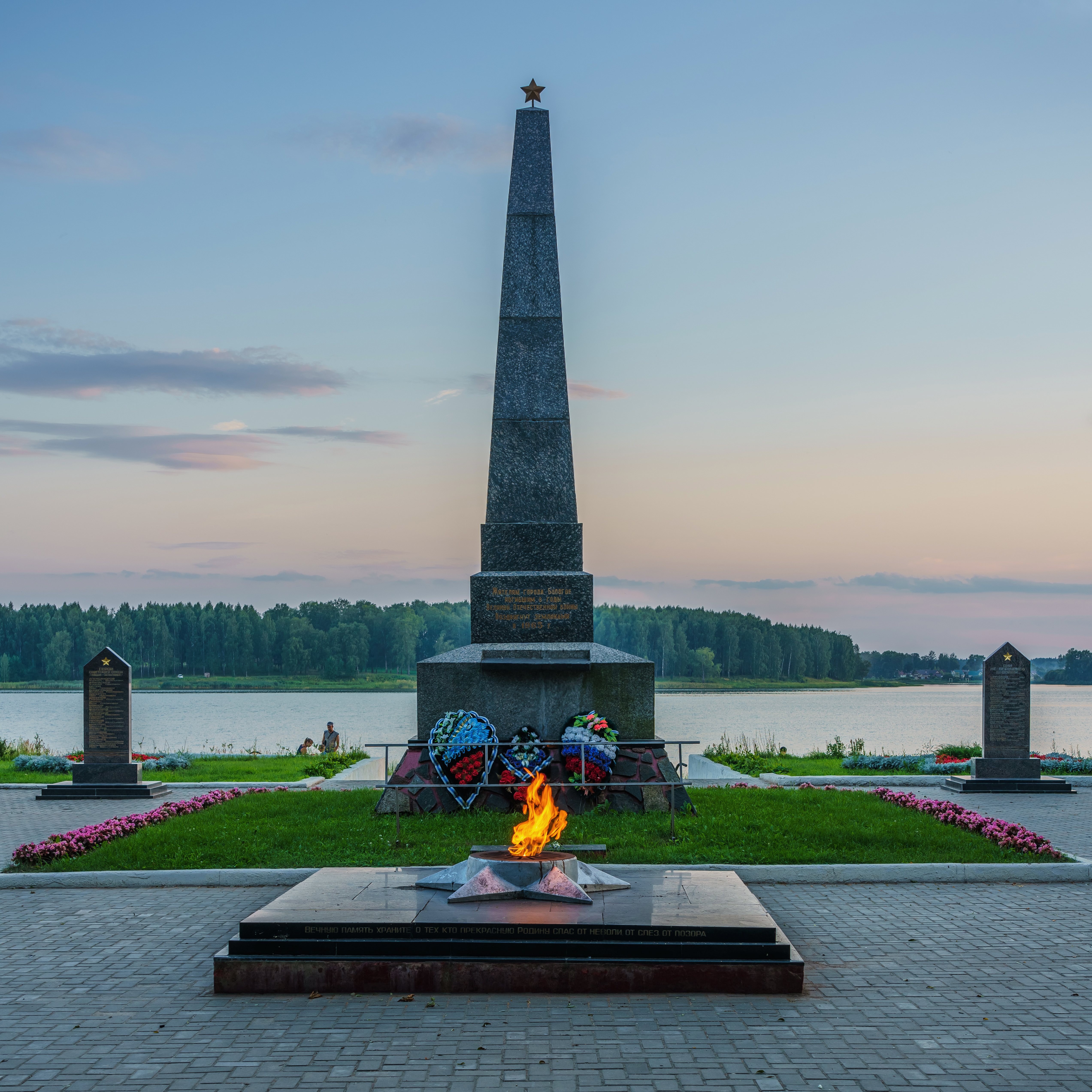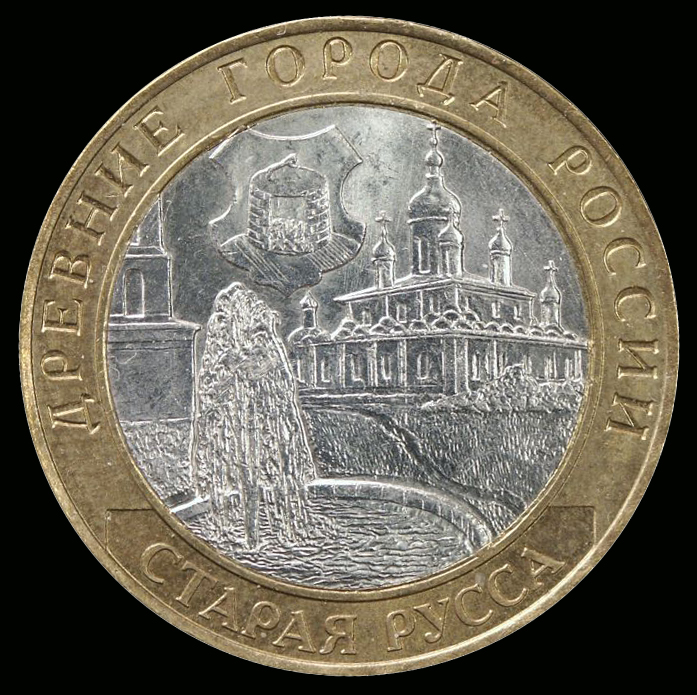|
Bologoye, Tver Oblast
Bologoye (russian: Болого́е) is a town and the administrative center of Bologovsky District in Tver Oblast, Russia, as well as a major railway hub. It is located approximately halfway between Moscow and St. Petersburg on the railway route connecting the two cities. Population: Etymology The name of the town derives from the name of nearby Lake Bologoye. History The first mention of Bologoye in historic records dates back to 1495, which is considered its year of foundation. In the course of the administrative reform carried out in 1708 by Peter the Great, Bologoye was included into the Ingermanland Governorate (known since 1710 as the St. Petersburg Governorate). In 1727, a separate Novgorod Governorate was split off.Snytko et al., p. 16 In 1770, it became a part of Valdaysky Uyezd of Novgorod Viceroyalty. In 1796, the viceroyalty was transformed into Novgorod Governorate.Snytko et al., p. 22 In 1851, Bologoye became a station of the Moscow � ... [...More Info...] [...Related Items...] OR: [Wikipedia] [Google] [Baidu] |
Tver Oblast
Tver Oblast (russian: Тверска́я о́бласть, ''Tverskaya oblast'', ), from 1935 to 1990 known as Kalinin Oblast (), is a federal subject of Russia (an oblast). Its administrative center is the city of Tver. It was named after Mikhail Kalinin, the Soviet revolutionary. Population: 1,353,392 ( 2010 Census). Tver Oblast is a region of lakes, such as Seliger and Brosno. Much of the remaining area is occupied by the Valdai Hills, where the Volga, the Western Dvina, and the Dnieper have their source. Tver Oblast is one of the tourist regions of Russia with a modern tourist infrastructure. There are also many historic towns: Torzhok, Toropets, Zubtsov, Kashin, Vyshny Volochyok, and Kalyazin. The oldest of these is Rzhev, primarily known for the Battles of Rzhev in World War II. Staritsa was the seat of the last appanage principality in Russia. Ostashkov is a major tourist center. Geography Tver Oblast is located in the west of the middle part of th ... [...More Info...] [...Related Items...] OR: [Wikipedia] [Google] [Baidu] |
Rybinsk
Rybinsk ( rus, Рыбинск, p=ˈrɨbʲɪnsk), the second largest city of Yaroslavl Oblast in Russia, lies at the confluence of the Volga and Sheksna Rivers, 267 kilometers north-north-east of Moscow. Population: It was previously known as ''Ust-Sheksna'' (until 1504), ''Rybnaya Sloboda'' (until 1777), ''Shcherbakov'' (1946–1957), and ''Andropov'' (1984–1989). History Early history Rybinsk is one of the oldest Slavic settlements on the Volga River. The place was first recorded by chroniclers in 1071 as Ust-Sheksna, i.e. "the mouth of the Sheksna". During this period the settlement was a regional center for craft and metal based produce and for trade. In the mid-13th century, Ust-Sheksna was laid waste by invading Mongols. For the next few centuries, the settlement was referred to alternatively as Ust-Sheksna or Rybansk. From 1504, it was identified in documents as Rybnaya Sloboda (literally: "the fishing village"). The name is explained by the fact that the settleme ... [...More Info...] [...Related Items...] OR: [Wikipedia] [Google] [Baidu] |
Staraya Russa
Staraya Russa ( rus, Старая Русса, p=ˈstarəjə ˈrusːə) is a town in Novgorod Oblast, Russia, located on the Polist River, south of Veliky Novgorod, the administrative center of the oblast. Its population has steadily decreased over the past years, going from 41,538 recorded in the 1989 Census to 35,511 in the 2002 Census to 31,809 in the 2010 Census. Etymology The origin of the name of Staraya Russa is unclear. The most involved and widespread hypothesis was presented by philologists and linguists R. A. Akheyeva, V. L. Vasilyev, and M.V. Gorbanevsky. According to this hypothesis, ''Russa'' comes from Rus'—a Slavic people, who settled in the vicinity to control trade routes leading from Novgorod to Polotsk and Kiev—which, in turn, is usually thought to originate from an Old Norse term for "the men who row" (''rods-'') as rowing was the main method of navigating the rivers of Eastern Europe, and that it could be linked to the Swedish coastal ... [...More Info...] [...Related Items...] OR: [Wikipedia] [Google] [Baidu] |
Sonkovo
Sonkovo (russian: Сонко́во) is an urban locality (an urban-type settlement) and the administrative center of Sonkovsky District of Tver Oblast, Russia. Population: History Founded by the Russian Greek Orthodox Inkeriköt (Izhorians) in the 17th century and called Savelionkylä (or Savelankylä), the village later changed its name to Savelino () due to its proximity to the village of Savelikha, which was built in 1870 during the construction and expansion of the private Rybinsk- Bologoye Railway. The railway merged with the narrow gauge (1067 mm) Novgorod Railway and broad gauge (1829 mm) Tsarskoye Selo Railway in 1895 to form a new private railway company, which then built two branch lines from Savelino — one to Kashin () and the other one to Krasny Kholm () in 1898 and 1899 respectively. During the Soviet era, following the construction of new railway lines and a bridge over the Volga River, Sonkovo became a major railway station. In 1903, the settlement ... [...More Info...] [...Related Items...] OR: [Wikipedia] [Google] [Baidu] |
Bezhetsk
Bezhetsk (russian: Бе́жецк) is a town and the administrative center of Bezhetsky District in Tver Oblast, Russia, located on the Mologa River at its confluence with the Ostrechina. Population: 29,000 (1967). It was previously known as ''Gorodetsk'' (until 1766). History The settlement of Bezhichi was first mentioned in 1137, when it was owned by Novgorod. The original name, with the literal meaning of "refugees", suggests that early settlers were former Novgorodians. Historical Bezhichi was located north from the present-day town; the settlement was destroyed by raiders in 1272 and re-established on the present site as the fortress of Gorodetsk (). In the early 15th century, the area of Bezhetsky Verkh was annexed by Grand Duchy of Moscow. Since 1433, Bezhetsk had its own prince, who was subordinate to the Grand Prince of Moscow. In the course of the administrative reform carried out in 1708 by Peter the Great, Gorodetsk was included into Ingermanland Governorate (k ... [...More Info...] [...Related Items...] OR: [Wikipedia] [Google] [Baidu] |
Subdivisions Of Russia
Russia is divided into several types and levels of subdivisions. Federal subjects Since 30 September 2022, the Russian Federation has consisted of eighty-nine federal subjects that are constituent members of the Federation.Constitution, Article 65 However, six of these federal subjects—the Republic of Crimea, the Donetsk People's Republic, the Kherson Oblast, the Lugansk People's Republic, the federal city of Sevastopol and the Zaporozhye Oblast—are internationally recognized as part of Ukraine. All federal subjects are of equal federal rights in the sense that they have equal representation—two delegates each—in the Federation Council (upper house of the Federal Assembly). They do, however, differ in the degree of autonomy they enjoy. De jure, there are 6 types of federal subjects—24 republics, 9 krais, 48 oblasts, 3 federal cities, 1 autonomous oblast, and 4 autonomous okrugs. Autonomous okrugs are the only ones ... [...More Info...] [...Related Items...] OR: [Wikipedia] [Google] [Baidu] |
2009 Nevsky Express Bombing
The 2009 Nevsky Express bombing occurred on 27 November 2009 when a bomb exploded under a high speed train travelling between the Russian cities of Moscow and Saint Petersburg causing derailment near the town of Bologoye, Tver Oblast (approximately from Moscow), on the Moscow–Saint Petersburg Railway. The derailment occurred at 21:34 local time (18:34 UTC). Russian officials had stated that 39 people were killed and 95 injured but later retracted that estimate. 27 deaths had been reported by 2 December. A second bomb exploded at the scene of the investigation the following day, injuring one. It was reported to have been triggered by a remote mobile phone. The first respondents were residents of Lykoshino, a nearby village. A field hospital was set up to treat the wounded and at least 50 were hospitalised in Saint Petersburg. It is believed that, at the time of the derailment, the Nevsky Express was carrying 661 passengers in 13 carriages, of which the last four were tho ... [...More Info...] [...Related Items...] OR: [Wikipedia] [Google] [Baidu] |
Borovichsky Uyezd
Borovichsky Uyezd (''Боровичский уезд'') was one of the subdivisions of the Novgorod Governorate of the Russian Empire. It was situated in the southcentral part of the governorate. Its administrative centre was Borovichi. Demographics At the time of the Russian Empire Census of 1897, Borovichsky Uyezd had a population of 146,368. Of these, 98.4% spoke Russian, 0.7% Karelian, 0.2% German German(s) may refer to: * Germany (of or related to) **Germania (historical use) * Germans, citizens of Germany, people of German ancestry, or native speakers of the German language ** For citizens of Germany, see also German nationality law **Ger ..., 0.1% Polish, 0.1% Yiddish, 0.1% Estonian and 0.1% Latvian as their native language. Демоскоп Weekly - Приложение. Справочник статистических показат� ... [...More Info...] [...Related Items...] OR: [Wikipedia] [Google] [Baidu] |
Leningrad Oblast
Leningrad Oblast ( rus, Ленинградская область, Leningradskaya oblast’, lʲɪnʲɪnˈgratskəjə ˈobləsʲtʲ, , ) is a federal subject of Russia (an oblast). It was established on 1 August 1927, although it was not until 1946 that the oblast's borders had been mostly settled in their present position. The oblast was named after the city of Leningrad. In 1991, the city restored its original name, Saint Petersburg, but the oblast retains the name of Leningrad. The capital and largest city is Gatchina. The oblast overlaps the historic region of Ingria and is bordered by Finland ( Kymenlaakso and South Karelia) in the northwest and Estonia (Ida-Viru County) in the west, as well as five federal subjects of Russia: the Republic of Karelia in the northeast, Vologda Oblast in the east, Novgorod Oblast in the south, Pskov Oblast in the southwest, and the federal city of Saint Petersburg in the west. The first governor of Leningrad Oblast was Vadim Gustov (in ... [...More Info...] [...Related Items...] OR: [Wikipedia] [Google] [Baidu] |
Borovichi Okrug
Borovichi (russian: Боровичи́) is the second largest town in Novgorod Oblast, Russia, located on the Msta River in the northern spurs of the Valdai Hills, east of Veliky Novgorod, the administrative center of the oblast. As of the 2010 Census, its population was 53,690. History The Msta River was an important waterway since at least the 10th century, since it connected Novgorod with the basins of the Volga and the Northern Dvinas. The settlement was first mentioned in 1495. It was granted town status in 1770 by Catherine the Great. The main occupation of the town's inhabitants was piloting ships through the rapids of the Msta River that used to be a part of an important waterway connecting Central Russia with the Baltic Sea (hence a rudder appears on the town's coat of arms granted by Catherine the Great). However, by the mid-19th century, after opening of the Volga–Baltic Waterway and the Moscow-Saint Petersburg Railway, the significance of the Msta Rive ... [...More Info...] [...Related Items...] OR: [Wikipedia] [Google] [Baidu] |
Valday, Novgorod Oblast
Valday (russian: Валда́й) is a town and the administrative center of Valdaysky District in Novgorod Oblast, Russia, located on the southwestern shore of Lake Valdayskoye, the biggest one in the set of lakes in the highest region of the Valdai Hills, on the M10 Highway connecting Moscow and St. Petersburg, from Moscow and from Veliky Novgorod, the administrative center of the oblast. Population: History It was first mentioned in a chronicle in 1495. At the time, it was a part of Derevskaya Pyatina of the Novgorod Republic. The growth of Valday was facilitated by construction of a road connecting Novgorod to Central Russia and by the foundation of the Valday Iversky Monastery in 1653, which became a major cultural center. The famous monastery, built under the auspices of Patriarch Nikon in the 1650s, is located on one of the islands of Lake Valdayskoye. In the course of the administrative reform carried out in 1708 by Peter the Great, the territory was inclu ... [...More Info...] [...Related Items...] OR: [Wikipedia] [Google] [Baidu] |








